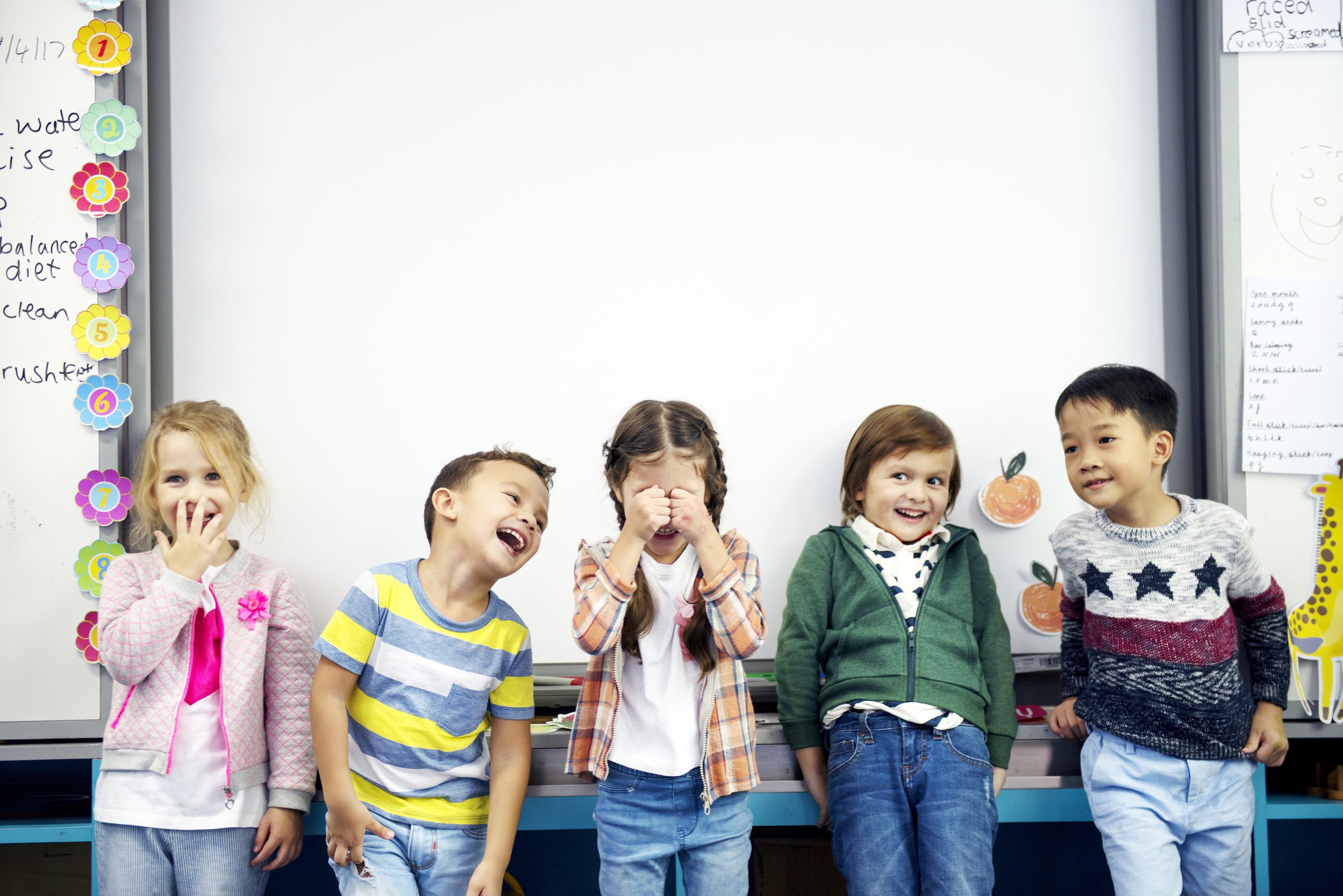Positive Behaviour Management in the Early Years
With so many distractions nowadays, from televisions, mobile phones, games to amazing gadgets it is not unexpected that some children can find it difficult to remain focused on activities and study.
Generally, most children will learn to cope with this as they develop, they learn to understand what to block out and which things to listen to.
Helping a child to negotiate and differentiate between these distractions, takes time and lots of reinforcement. Using positive reinforcement will make the journey generally smooth, negative reinforcement could lead to a bumpy journey.
How does a child differentiate between right and wrong?
At the early stages in development, children will learn right and wrong from sensory cues. They learn to hear the different tones of voices, they learn to look at faces, if they hear and respond to words it will generally be the last word that was said.
As an Early Years teacher, I have spent years working on strategies for behaviour management.
Do I just tell a child not to do something? Does that teach them anything?
Telling them what not to do just informs them what is wrong. It does not tell them or encourage them to exhibit positive behaviour.
In the early years, classroom teachers work on setting routines as early on in the year as possible. In my experience, most children respond well to routines at the beginning. They find security and reassurance in knowing what to do each week. As they develop, then more routines can be introduced into the classroom. Using visuals to reinforce routines, especially at the beginning, helps to reinforce the words that are said. I use happy faces to show a child visually that they have done well. It is a simple way of reinforcing good behaviour.
At home, set routines for your children just the same. Use visuals to help reinforce those routines, and you can always use happy stickers to reinforce when your child has done well. Gradually build up your repertoire of routines. Keep visual rewards small. If you buy them a toy to reward them each time they do well, a sticker is not going to cut the mustard. They will begin to expect huge rewards, and rather than a simple behaviour reinforcement it becomes a huge costly affair.
Use positive language
Recent research from the DfE in the U.K. found that using more praise than punishment improved concentration and outcomes. A child who is repeatedly told that they are good and kind feels good and kind. A child who is constantly told that they are naughty is more than likely going to reflect the behaviour that they have been labelled with.
Use positive words – kind, sharing, gentle, polite
The language that you use will be reflected in the language that the children use with each other.
Define what they did well
Praise a child for effort and importantly say what they did well. It you verbalise what they have done well on a regular basis, with lots of praise this will help to reinforce that good behaviour. All children want to please, they sometimes do not know how to, or what is meant by good or bad behaviour. How do they know if we do not tell them, or give them non-verbal cues?
Saying what they did well names that behaviour, and as they develop helps to reinforce that that behaviour is the right thing to do.
Be Prepared
Keep children busy and occupied. Plan before you go anywhere, just as teachers plan before a class. What is your child going to do whilst you are engaged? Something small, a squishy toy, a textural object will keep children engaged for quite some time.
If they are not engaged, they are more likely to display negative behaviour. Plan for success!
Being prepared also means knowing your child. Think about what makes then sad, happy, annoyed, frustrated, and what calms them down. Knowing your child’s emotions and responses to them will help you to resolve issues with them before they get to that difficult moment.
Use empathy to reflect on how they are feeling. “I know that you are feeling sad because we need to put the toys away”, then talk about something positive that you are going to do, or when you will be able to play again.
Conflict Resolution
Accept your child for who they are, and help them identify their emotions and why they do things. Ask them why they did something. Give them thinking time to explain.
“Why did you take that toy off John?”
Give them time to explain why. If they do not know why, you could ask the next question.
“Was that the right thing to do?”
If the first question starts an argument between two children over who had the toy first, remove the toy from the debate. Reassure them both that you will listen to them one at a time. Listen to both sides of the story and then you can assess who was in the wrong. Summarise what has happened out loud – “So you had the toy and then ….” Ask the child who took the toy and then ask the next question. “Was that the right thing to do?”
Try to get the child to verbalise what they did wrong, and apologise to their friends stating what they are apologizing for. Help them to put their apology into words if needed. Again labelling what they are sorry for helps to reinforce that was not the right thing to do.
Remember, always give children time to work things out between themselves before intervening. Conflict resolution at an early age is a lifelong skill. But help them along the way if it is getting out of hand, or they are not able to work things through on their own.
Take care not to reward negative behaviour
Many times I see children rewarded for negative behaviour. If you are buying them a toy, make sure it is just as a gift, or a reward for doing something good. If you want a child to tidy their bedroom and they refuse, do not offer them a toy for tidying their bedroom. You will find that this goes in the reverse.
The next time you ask them they will probably refuse, expecting that you will offer them a toy if they play up and refuse to do it. Basically you were rewarding them for refusing to do something. The child is just responding to your non-verbal reinforcement of their behaviour.
Negative Behaviour Cycle
If a child has got into a cycle of negative behaviour, changing that cycle will take time. In this instance, you will need to be always on the look out for good behaviour, and as soon as you see them doing something good make a huge thing of it. Label the positive behaviour, so they can identify what they have done well.
Each time that you praise them and identify a positive behaviour, this will gradually reinforce what they are doing well, and their self-esteem will start to rise.
This takes time and effort, but once you see the change you can have on the life of a child, and sometimes the whole family by changing the cycle it is amazing.
The importance of positive behaviour management
In conclusion, positive behaviour management begins in the early years. It can last a lifetime. It can change the way children see themselves and the way they react to the world around them. Academics are important, but without the ability to manage themselves and their behaviour, to be able to interact with others, to know right from wrong, all the academic attainment in the world will not enable them to live a happy and fulfilled life.
Most things worth doing take time. Set ground rules, be consistent, and have a thinking space for your child if they do not listen or follow instructions. It is always good for a child to reflect if they are not ready to accept that what they did was not the right thing. Calming music can also help child to lighten their mood.
Most importantly, as an adult – stay calm! Your calmness will keep them calmer.




